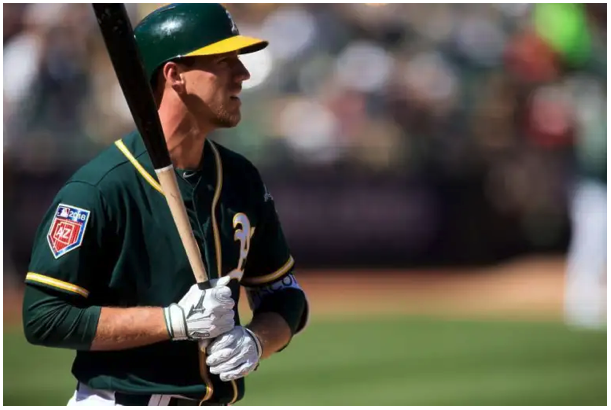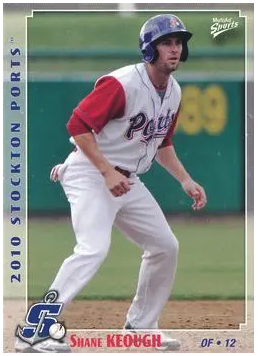Filling the MLB All-Star Game with an All-Earth Roster: Recognizing Baseball’s Most Energy, Environment, and Climate Conscious Players
Baseball’s Midsummer Classic is just around the corner, where fans, players, and coaches all vote on which players will play in the All-Star Game based on their performance during the first half of the season. This year’s game is hosted in Washington, D.C, both home of the first Major League Baseball (MLB) stadium ever to be certified as LEED Silver and also epicenter of U.S. politicians debating the green issues of the day. As such, I thought it appropriate to assemble an All-Star Team with MLB players who have proven themselves to be the most conscious of issues surrounding energy, the environment, and climate change– the Green All-Star Game, if you will.
Why do this?
Lew Blaustein of the GreenSportsBlog does a great job explaining that bringing awareness to green issues is the most critical action athletes, teams, and leagues can do with their platform. Athletes especially can educate the public and make environmental issues relevant to new audiences. The world of sports already takes pride in charitable work, including such high-profile partnerships as the NFL integrating pink into its color schemes for Breast Cancer Awareness Month. Among MLB players, the most commonly supported charities include children’s hospitals, fighting poverty, cancer research, and more.
Source: We Are Fanatics
Obviously, these charities are more than deserving causes, but surely there is also room for athletes focusing on climate change and the clean energy transition. Baseball players are especially great for these endeavors because they are exceedingly marketable given their faces are not obscured by helmets like football or hockey players, they have long-lasting careers, and baseball forever has a place in the social sphere as America’s Game.
Not only that, but baseball players have many reasons to advocate for the environment and fight against climate change. For one, the effects of climate change are most immediate and dangerous to islands and nations in the Caribbean, and MLB rosters feature a significant number of players from vulnerable communities— notably the Dominican Republic, Cuba, Puerto Rico, and more. And if not for altruistic reason, baseball players might even seek to support green causes so climate change doesn’t alter the number of home runs or the hit-by-pitch count in baseball (note– I know there’s no real evidence of these effects, this is said tongue-in-cheek– put away the pitchforks).
Who makes the cut?
With all that said, the search begins for MLB players who have publicly championed green causes– whether that means renewable energy technologies, environmental causes, or fighting climate change.
Manager
While the MLB All-Star Game traditionally calls on the coaches of the previous year’s World Series participants to manage the game, the Green All-Star Team can bring Dusty Bakerback to D.C. Despite being let go as manager of the Washington Nationals last year, Baker was brought into the San Francisco Giants organization as a special advisor, and so we’ll call him eligible for this honor. Baker might also take a few swings as pinch-hitter for this Green All-Star Team, as in his playing career he was named to two All-Star Teams and won one World Series ring. But it’s not these accomplishments (nor even his role in inventing the high-five) that bring him to the Green All-Star Team, but rather his founding of Baker Energy Team, a company that provides energy solutions to residential and commercial properties, including microgrids, solar installations, electric vehicle charging, and more.
Source: Baker Energy Team
Pitcher
Daniel Norris of the Detroit Tigers, sometimes known as the Man in the Van, is a true environmental advocate. Norris, an ambassador for 1% for the Planet (an organization dedicated to getting members to contribute at least one percent of their annual sales to environmental causes), is known for his simple living, advocating for the planet, and protecting the environment. Even within the world of baseball, Norris advocated for the increase of recycling options at baseball games:
I think there’s so much that goes on in the baseball world that people just don’t even think about, as far as taking care of the environment. There’s 50,000 people at every game and everybody is getting food and drinks and not even thinking about where they’re throwing their trash…Obviously it’s a choice you make, but it’s different everywhere we go, whether we’re in Baltimore or Kansas City or Texas. I always make a point to look around and see if there are recycling bins or somewhere to put your paper versus plastic– and some places are doing real well.
Source: Patagonia
Outfield
Nelson Cruz of the Seattle Mariners has been widely recognized for his philanthropic efforts, both in the United States and in his home country of the Dominican Republic. The specific effort that generates Cruz some serious credentials towards the Green All-Star Team is his work to bring sustainable infrastructure to his hometown of Las Mantas de Santa Cruz. Sustainable infrastructure is an especially important cause in the Caribbean, as growing economies and increasing populations necessitate investment in sustainability more than ever before, especially with the environment itself being the source of much of the region’s wealth.
Source: Twitter
Outfield
As a second outfielder, Stephen Piscotty of the Oakland Athletics earns the spot based on various efforts as an eco-athlete that have been highlighted by the GreenSportsBlog. Piscotty’s green credentials include a Stanford education in Atmosphere and Energy Engineering and his personal investments in renewable energy technology. In one interview, Piscotty noted:
I am looking closely at solar and smart grid as investment options. And then, and this is a long-term technology, but fusion is something that holds great promise. The clean energy generation potential is almost limitless.
Source: My San Antonio
The rest of the roster
So far, we have a manager, a pitcher, and two outfielders. Sadly, those four advocates for energy and the environment exhausts the list from current MLB players. If, however, we allow ourselves to dip into the pool of retired players, we can add two more outfielders to the Green All-Star Team:
Shane Keough was a prospect for the Oakland Athletics from 2007 to 2010. While injuries derailed his dreams of making it to the Big Leagues, upon retirement Keough ended up working in the environmental engineering field. In 2016, Keough founded Solar Waste Reprocessing LLC to maximize the potential energy generation of municipal waste, and also later became CEO of Global Eco Solutions Inc. to promote and develop “mutually beneficial solutions for global community and environmental issues.”
Source: Trading Card DB
Another retired player to consider, though one who saw more success in his playing days, is Chris Dickerson. From 2008 to 2014, Dickerson played for five different MLB teams, but it’s also his actions from outside his playing career that are worth highlighting. During his rookie year, Dickerson founded Players for the Planet to organize professional athletes to “support its mission to educate all involved in youth, amateur, and professional sports on how best to adopt environmental practices that will preserve the playing fields and stadiums where we all enjoy playing and watching sports.”
Source: Green Sports Blog
Note: Article has been updated to reflect a correction from Dickerson, who noted that the organization started in while he was a rookie in 2008 and not upon retirement, as initially stated. Dickerson also noted that Nelson Cruz and Daniel Norris are on the rosters of players he support, including the involvement Dickerson and Cruz in We Are One Village.
Final roster
The search for green athletes in the MLB turns up a Green All-Star Team with a starting pitcher who has never won more than five games in a season, an active outfielder who has never made an All-Star Game, a retired outfielder who never made an All-Star Game, and another outfielder who never even reached the majors. Even being managed by a three-time NL Manager of the Year in Baker and anchored by a six-time All-Star in Cruz (the only Green All-Star who also made the 2018 MLB All-Star Game), this depleted team of just six advocates is frankly pathetic. While we should be grateful to those few players who have adopted green causes, the movement would seriously benefit by having some of the game’s biggest starts (think Aaron Judge, Bryce Harper, or Mike Trout) involved.
Even worse, the locker rooms in the MLB appear to have people actively speaking out against these important energy and environmental causes. Piscotty noted that when his interest in renewable energy and concern regarding climate changes comes up around teammates, the response is “about a 50-50 split” between supporters and those who challenge him. While debate is an integral part of the scientific process, over 97% of scientistsagree that climate-change is happening and is due to human activity, so having 50% of (non-scientist) baseball players disputing the reality of climate change is far too many. Further, at least one high-profile MLB player, Cleveland pitcher Trevor Bauer, has used his platform to disseminate climate change denial and misinformation.
Well that’s disheartening, is there anything to celebrate?
While filling out a Green All-Star Team was not as successful as one might have hoped, the MLB ecosystem still does have reason to pat themselves on the back for their energy and environmental efforts.
MLB and team initiatives
Major League Baseball itself does offer a number of awareness-raising and educational initiatives towards sustainability through its MLB Green program, which has led to outcomes like the Arizona Diamondbacks receiving an Environmental Innovator of the Year award from the Green Sports Alliance, various giveaways and discounts for fans who recycle or take public transit to games, and a host of other sustainability efforts. Even for the 2018 All-Star Game in D.C., MLB is partnering with local schools to bring awareness to environmental efforts and offsetting the carbon footprint of player travel.
Source: MLB
Stadiums
While the home of the actual All-Star Game, Nationals Park, is the first LEED Silver ballpark in MLB, many other stadiums in the league are making environmental strides as well.
Other LEED-certified baseball stadiums include San Francisco’s AT&T Park, Miami’s Marlins Park, Milwaukee’s Miller Park, and Minnesota’s Target Field.
St. Louis’s Busch Stadium cut energy costs 20% through energy upgrades, while Seattle’s Safeco Field saved $1.5 million over five years in energy and water use initiatives.
Both Boston’s Fenway Park and Cincinnati’s Great American Ball Park have hosted carbon-neutral games through the purchase of carbon offsets and renewable energy credits.
If we’re choosing a most appropriate host stadium for the Green All-Star Game, though, MLB hands out a Green Glove Award annually to the team that diverts the greatest amount of waste from area landfills. For the first nine years of the award’s existence, AT&T Park won it. But in 2017, Safeco Field took the crown…er, glove..after diverting 96% of its waste materials from the stadium towards recycling efforts. As such, Safeco Field is named this year’s greenest ballpark and given the Green All-Star Game.
Source: Sustainable MLB
How can we change the conversation?
Sports can be the ultimate awareness raiser for green issues. To try to move the conversation in that direction, Blaustein of the GreenSportsBlog created the #CoverGreenSports movement.
I’d say another good way to push for recognition of the issues is to get one of the above athletes nominated for the Marvin Miller Man of the Year award— the prize given each year to the MLB player who “inspires other through his on-field performances and contributions to his community.” If the winner was one of the players advocating for green issues, such recognition would raise the profile of those efforts and perhaps inspire other players to take up those causes.
Are there other MLB players who should be included in the Green All-Star Team that I missed? Do you have other ways to grow the sphere of energy and environmental advocates in the MLB? Let me know in the comments below or on Twitter.










